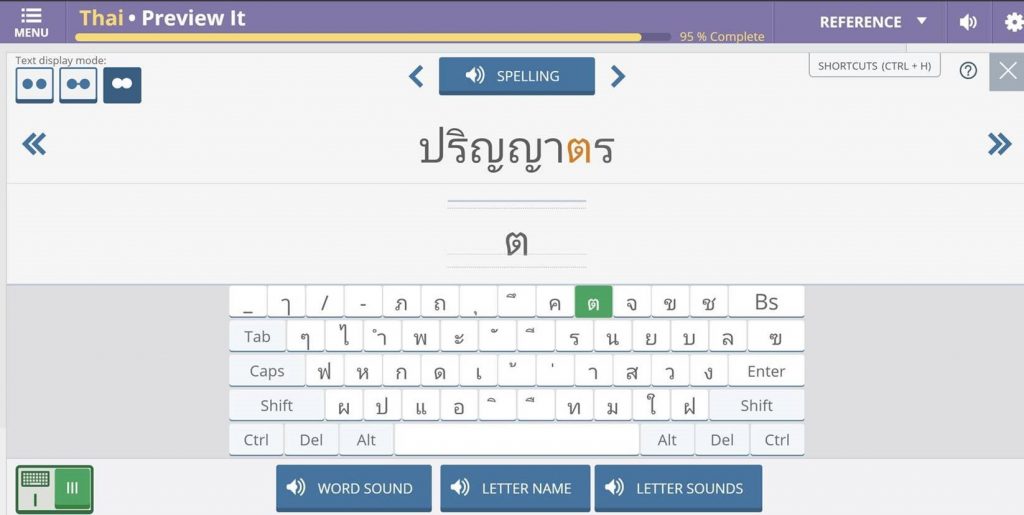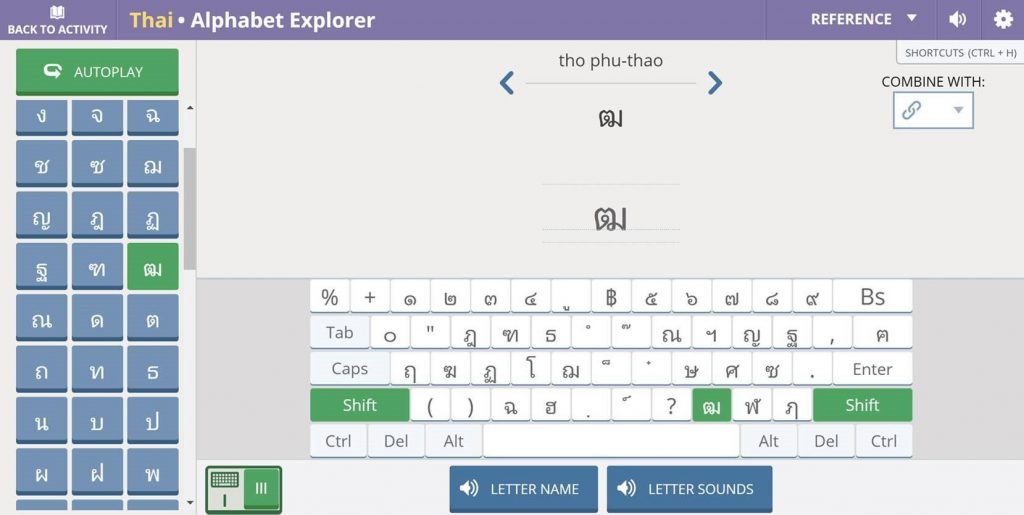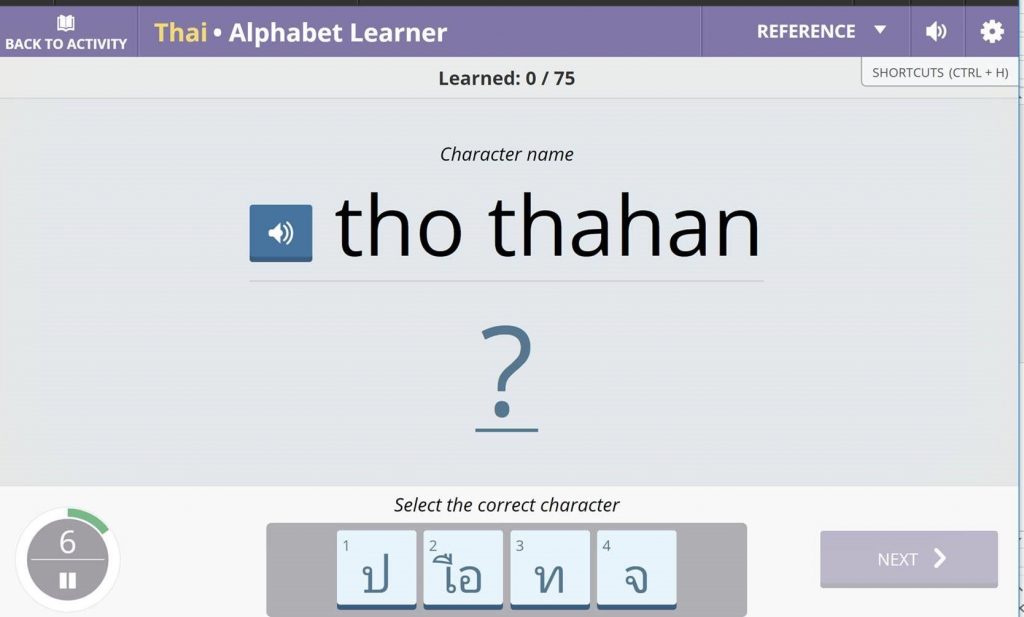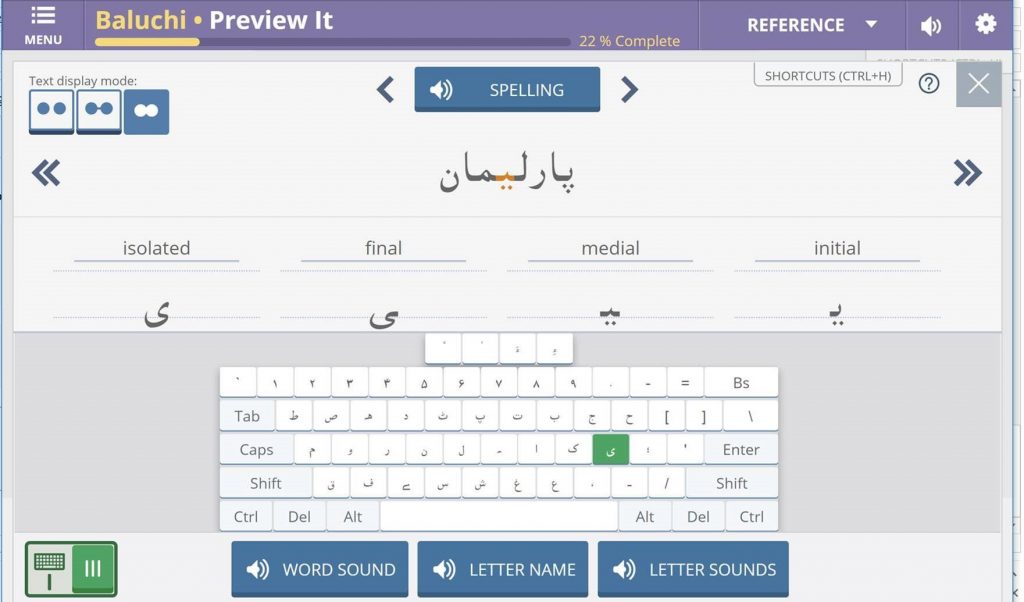It’s time to spend less time on alphabet learning Posted by Transparent Language on Nov 5, 2018 in For Learners, Learning + Usage Tips, Learning Feature Updates
Alphabet learning is like the “accessory work” of language learning. A Crossfit athlete, for example, cares mostly about the big movements: squats, cleans, snatches, muscle-ups, etc. To improve these movements, dedicated athletes will do accessory exercises like hammer curls, rows, or glute bridges. Less fun to spend lots of time on, no doubt, but necessary for building strength and improving overall performance.
Many language learners feel the same about alphabet: absolutely necessary, but less fun and interesting the longer it takes, especially when time is limited. That’s why we’ve thought long and hard about how to shorten the alphabet learning process without sacrificing overall performance (or proficiency). Does agonizing over how to teach alphabets faster make us language nerds? Of course, but we’re not ashamed of that. Especially now that we know we’re not alone in thinking about it. We recently found ourselves in a presentation at the Foreign Service Institute about making language courses “longer” by teaching alphabets faster.
If that sounds confusing, it was just Jim Bernhardt and Sunyoung Lee of FSI being clever. Imagine, for example, you are instructing a thirty-week course that devotes three weeks to teaching the Thai alphabet, and then 27 weeks on the language. If instead you can teach the alphabet in just a few days, you make the course “longer” by giving instructors more time to cover other topics. Get it?
To that end, we’ve developed alphabet functionality that is content agnostic, so we can efficiently leverage whatever curriculum or content one is learning or teaching as a vehicle for alphabet learning.
Alphabet Zoom
Enter Alphabet Zoom, an activity that provides opportunities for alphabet learning within any given set of content.
If, for example, someone needs to quickly reach intermediate proficiency in Thai for a special purpose that involves knowing the word ปริญญาตรี, our alphabet learning experience can be delivered through that. In our activities, a small magnifying glass symbol will show next to ปริญญาตรี and every other word or phrase being learned. Clicking on that symbol launches Alphabet Zoom, where that lexical item’s letter names, letter sounds, letter keyboard positions, etc. can be investigated and played with in many ways.
The learner can freely move from letter to letter, word to word, listening and looking at various aspects of the script. Unlike learning the alphabet letter by letter, which treats each letter equally, Zoom’s contextual nature emphasize an alphabet’s most frequent letters and letter combinations. Because it’s in the context of the particular words or phrases the learner needs to know, it’s motivating, and targeted. You probably won’t run into the hard sign in Russian!

Alphabet Explorer and Alphabet Learner
Alphabet Zoom’s in-context capability delivers the greatest impact, but of course adults sometimes want to look at the entire matrix of something. Enter Alphabet Explorer (a reference section) and Alphabet Learner (an adaptive quick-recognition game).


It’s exciting to watch a learner work through Alphabet Explorer to get oriented, then go play the Alphabet Learner game a few times to get generally familiar, then go into his or her specific curriculum and use the Alphabet Zoom from that point on. By incorporating and encouraging alphabet learning in tandem with vocabulary acquisition and other skills-building, we offer instructors and individuals a time-saving alternative.
Some scripts have more to cover than others. The Baluchi Alphabet Explorer reference and Alphabet Learner game, for example, limit themselves to the primary, stand-alone letter forms, and then learners broaden recognition of that single form to include the initial, medial and final forms in actual words and phrases with Alphabet Zoom. One can display the target phrase in the standard form or in either of two artificial displays that help the learner to correlate letter forms and see where letters begin and end, which is not always obvious to beginners!



Whichever mode one chooses, one can then play around, listening and looking at various aspects of any letter in the target phrase:

And of course, what you are playing around in is not content designed specifically for alphabet learning, but the words or phrases from the curriculum you are trying to learn.
Ideally, every course would have the time to spend weeks on alphabet—and it wouldn’t sap learners of every ounce of motivation. In reality, both for mission-readiness and for maintaining learners’ initial excitement, language training programs need to get learners to “the good stuff” as quickly as possible. Integrated, content-agnostic alphabet learning achieves exactly that.
Learn more about these features and other capabilities of the CL-150, our professional language training platform, and Transparent Language Online, our language learning platform for schools, libraries, and individuals.

Build vocabulary, practice pronunciation, and more with Transparent Language Online. Available anytime, anywhere, on any device.




Comments:
Sawsan FETOUH:
Thank you very interesting and is really time consuming.
Michelle:
What an ingenious method to teach the alphabet! I know some people will complain about it being too much like a video game (I’ve seen that with Duolingo) but even non-gamers, those poor benighted souls, can learn to lighten up while they learn. 😉
Tongue firmly in cheek,
Michelle, learning language #6…
Transparent Language:
@Michelle Fortunately for us, no one has ever complained we’re too game-like. We intentionally design activities and get feedback from our User Experience folks but also teachers and linguists to make sure we strike a balance between being fun and effective.
Anyone so serious about language learning that they don’t enjoy game-like aspects of our platform probably wants to get down to the “good stuff” (vocab drilling, grammar explanations, etc.) even faster. In that sense, this method of learning is especially suited for them!
Enjoy #6, that’s impressive!